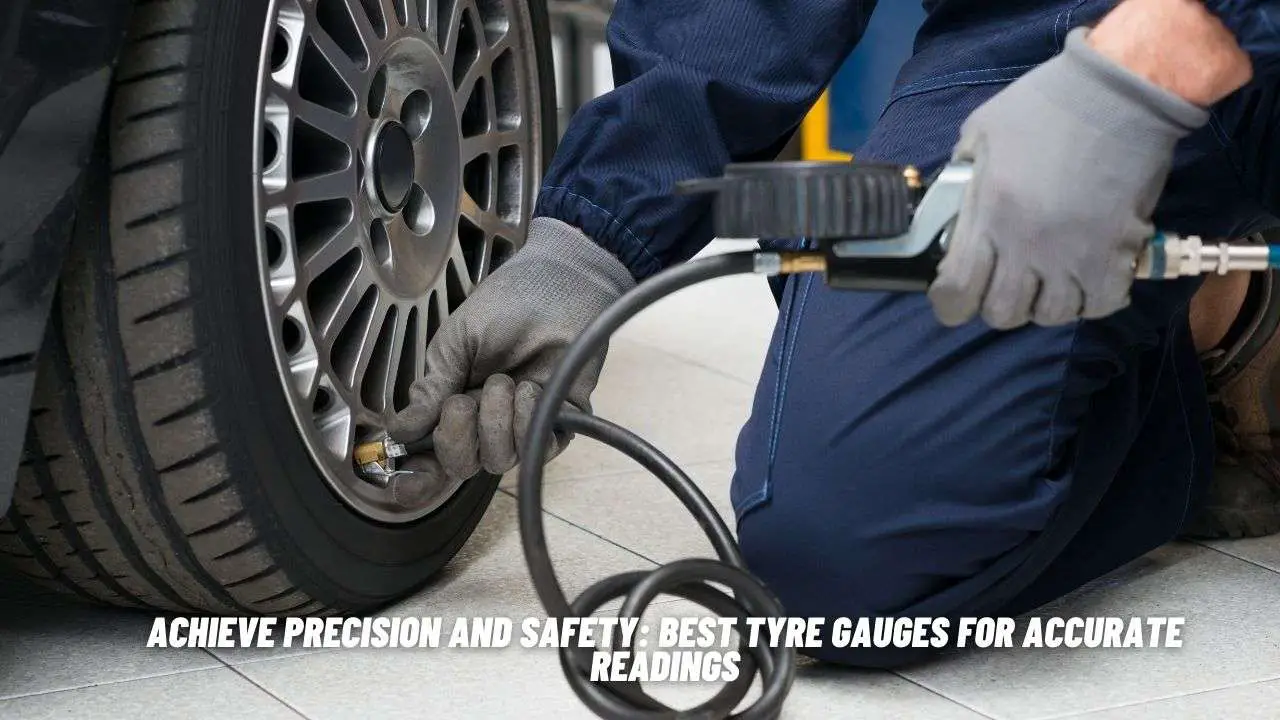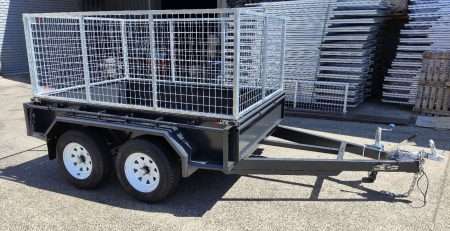
Achieve Precision and Safety: Best Tyre Gauges for Accurate Readings
Importance of Tyre Pressure
Maintaining the correct tyre pressure is a critical aspect of vehicle maintenance that is often overlooked. Tyre pressure plays a significant role in the performance and safety of your vehicle.
Impact on Vehicle Performance
Proper tyre pressure is essential for safe and efficient driving (How Stuff Works). Tyre pressure significantly influences a vehicle’s fuel efficiency, ride comfort, traction, and tyre lifespan.
Underinflated tyres can lead to decreased fuel efficiency and premature tyre wear. According to TTR Substations, underinflated tyres can reduce fuel efficiency by up to 3%. Furthermore, such tyres can result in reduced handling, leading to an overall suboptimal driving experience.
On the other hand, overinflated tyres can also negatively impact vehicle performance. Overinflation can lead to uneven tyre wear, reduced traction, and a harsher ride. Additionally, TTR Substations reports that overinflated tires can reduce fuel efficiency by up to 2%.
| Tyre Condition | Impact on Fuel Efficiency |
|---|---|
| Underinflated | Up to a 3% decrease |
| Overinflated | Up to a 2% decrease |
Regularly checking your vehicle’s tyre pressure using a reliable tyre pressure gauge can help you keep your tyres correctly inflated, thereby optimising vehicle performance.
Safety Concerns
In addition to impacting vehicle performance, tyre pressure also has a direct influence on driving safety. Underinflated tyres can increase the risk of a blowout, especially at high speeds. According to HowStuffWorks, the increased friction between the tire and the road surface is what causes this additional heat.
Similarly, overinflated tyres can also pose safety risks. The reduced road contact area resulting from overinflation can lead to a loss of traction, increasing the risk of skidding, particularly in wet or icy conditions.
Therefore, maintaining the correct tyre pressure is essential for safety. Regular use of a tyre pressure gauge can ensure your tyres are correctly inflated, providing a safer and more efficient driving experience. If you’re preparing for winter driving conditions, also consider tyre chains for snow to enhance grip and safety on icy roads.
Understanding Tyre Gauges
To maintain safety, fuel efficiency, and tyre longevity, it’s essential to regularly measure the air pressure in your vehicle’s tires. This is where tyre gauges come into play. They are a vital tool for checking tyre pressure (source), including in spare tires. In this section, we’ll explore the different types of tyre gauges and learn how to use them effectively.
Types of Tyre Gauges
There are several types of tyre gauges available on the market, including digital gauges, dial gauges, and pencil gauges. Each type has its own unique features and benefits.
Digital Gauges: Digital gauges are known for their accuracy and easy readability. They display the tyre pressure on an electronic screen, making it simple to get a precise reading. They are typically more expensive than other types of gauges, but their precision and convenience make them a popular choice.
Dial Gauges: Dial gauges feature a circular dial that displays the tyre pressure. They are generally accurate and easy to read, but they can be bulkier than other types of gauges.
Pencil Gauges: Pencil gauges are the simplest and most affordable type of tyre gauge. They are compact and easy to use, but they may not be as accurate as digital or dial gauges.
Using a Tyre Gauge
Using a tyre gauge is the most accurate way to measure tyre pressure, as visually inspecting the tyre is not sufficient. To use a tyre gauge, follow these steps:
- Locate the tyre’s valve stem and remove the cap.
- Place the tyre gauge on the valve stem and press down until the hissing sound stops.
- Check the reading on the gauge.
- Compare the reading with the recommended tyre pressure found in the vehicle owner’s manual or on the tyre placard located on the driver’s side door jamb (TTR Substations).
- If the tyre pressure is too high or too low, adjust it accordingly.
Checking tyre pressure should be done at least once a month and before long trips (source). It’s important to note that underinflated tyres can reduce fuel efficiency by up to 3%, while overinflated tyres can reduce fuel efficiency by up to 2%.
Understanding tyre gauges and how to use them effectively is an essential part of maintaining your vehicle’s tires. Whether you’re a small business owner, a transport company, a potential buyer, or a trailer enthusiast, using a reliable tyre pressure gauge can help ensure the safety and efficiency of your vehicle.
Benefits of Digital Gauges
In the world of tyre maintenance, accuracy is paramount. For this reason, digital tyre gauges have become a popular choice among small business owners, transport companies, trailer enthusiasts, and individual buyers. Digital gauges offer a host of benefits that can make tyre pressure management more efficient and effective.
Accuracy and Ease of Use
Digital tyre gauges are renowned for their accuracy, often surpassing traditional stick gauges in precision. According to HowStuffWorks, Consumer Reports, and Coyote Enterprises, digital gauges provide accurate readings that are easy to understand, thanks to their clear digital displays.
These gauges work by providing a readout of tyre pressure when the head is pressed into the tyre valve. This provides an instant and accurate measurement of your tyre’s pressure, enabling you to make necessary adjustments quickly and effectively.
Ease of use is another significant advantage of digital tyre gauges. Their straightforward operation makes them user-friendly, even for those who may not have much experience with tyre maintenance.
Additional Features
In addition to their accuracy and ease of use, digital tyre gauges also offer a range of additional features that can enhance your tyre maintenance practices. As Kal Tire mentioned, some models have backlit screens that make it simple to read in low light. This can be particularly beneficial for transport companies and trailer enthusiasts who may need to check tyre pressure during early morning or late-night trips.
While digital tyre gauges can be a bit more expensive than other types of tyre pressure gauges, their accuracy, ease of use, and additional features make them a worthwhile investment for anyone seeking to maintain optimal tyre pressure.
Remember, tyre maintenance is an integral part of vehicle upkeep, and using a reliable tyre pressure gauge can help ensure that your vehicle is safe and performing at its best. Along with maintaining tyre pressure, consider investing in other tyre and wheel accessories like lug nuts, hubcaps, wheel locks, and wheel spacers to ensure your vehicle’s wheels are secure and functioning properly.
Checking tyre pressure
Maintaining the correct tyre pressure is essential for the safe and efficient operation of your vehicle. Regularly checking and adjusting the pressure of your tyres is a simple yet critical part of vehicle maintenance.
When and how often
It is recommended to check tyre pressure at least once a month and before embarking on long trips to ensure proper inflation levels (TTR Substations). It’s important to note that tyre pressure should be checked when the tyres are cold, as heat from driving can increase tyre pressure and provide an inaccurate reading.
To check the tyre pressure, one needs a reliable tyre pressure gauge. These gauges are designed to deliver accurate readings, helping drivers maintain the optimal tyre pressure for their vehicle. For more details on using a tyre pressure gauge, check out our article on tyre pressure gauges.
Interpreting Readings
Interpreting the readings from your tyre gauge is crucial to maintaining the right tyre pressure. The recommended tyre pressure for your vehicle can typically be found in the owner’s manual or on a sticker inside the driver’s door jamb (TTR substations).
Over-inflated tyres can lead to uneven tyre wear, reduced traction, and a harsher ride, while under-inflated tyres can result in poor fuel economy, reduced handling, and an increased risk of a blowout.
To interpret the readings:
- If the gauge’s reading is higher than the recommended pressure, some air should be let out.
- If the reading is lower, air should be added until it reaches the recommended level.
Always remember to replace the valve cap securely to prevent leaks and keep out dirt and moisture.
By understanding when and how often to check the tyre pressure and how to interpret the readings, you can ensure your vehicle’s tyres are always properly inflated. This not only enhances the vehicle’s performance and safety but also contributes to its longevity. For more information on tyre maintenance, consider exploring other tyre-related articles such as tyre chains for snow, hubcaps, and wheel locks.
Managing tyre pressure
Proper management of tyre pressure is a key aspect of vehicle maintenance, affecting everything from fuel efficiency to safety on the road. This involves adjusting air pressure and understanding the factors that can affect tyre pressure.
Adjusting air pressure
Maintaining the right tyre pressure is crucial for the overall performance of your vehicle. Both underinflation and overinflation of tyres can lead to issues. Underinflated tyres can result in increased fuel consumption and reduced tyre life. It can also negatively impact the vehicle’s handling and braking capabilities (Tyres-Easy). On the other hand, overinflated tyres can cause a harsh ride, decreased traction, and an increased risk of a blowout. It may also lead to uneven tyre wear.
To adjust the air pressure, you’ll need an accurate tyre pressure gauge. Tyre pressure should be checked when the tyres are cold, as heat from driving can increase tyre pressure and give an inaccurate reading. The recommended tyre pressure for your vehicle can be found in the owner’s manual or on a sticker inside the driver’s door jamb.
Factors Affecting Tyre Pressure
Several factors can affect tyre pressure and necessitate adjustments. These include:
- Ambient Temperature: As the temperature outside changes, so does your tyre pressure. Generally, tyre pressure decreases in cold weather and increases in hot weather. This is why it’s particularly important to check tyre pressure during seasonal changes.
- Altitude: Higher altitudes can result in lower tyre pressure because of the reduced atmospheric pressure.
- Vehicle Load: If you’re carrying a heavy load or pulling a trailer, you may need to increase your tyre pressure to handle the extra weight.
- Tyre Damage: A puncture or damage to the tyre can cause a slow leak, resulting in consistently low tyre pressure. If you’re constantly needing to adjust the pressure on one tyre, it’s a good idea to check for damage.
By regularly checking and adjusting tyre pressure, you can ensure that your vehicle performs optimally and safely. Remember to use a reliable tyre gauge for accurate readings and to adjust pressure according to the manufacturer’s recommended levels. For more information about tyre gauges and other tyre and wheel accessories, check out our other articles on lug nuts, hubcaps, wheel locks, and wheel spacers.
Choosing the Right Tyre Gauge
When it comes to maintaining optimal tyre pressure, choosing the right tyre gauge is crucial. This essential tool allows you to monitor and adjust your tyre pressure accurately, ensuring improved vehicle performance and safety on the road.
Considerations in Selection
There are three main types of tyre gauges: stick gauges, dial gauges, and digital gauges. Each type has its own unique characteristics and advantages.
Stick Gauges: These basic and inexpensive gauges are simple to use but may not be as accurate as digital or dial gauges.
Dial Gauges: These models offer a larger display that is easier to read than stick gauges. They are typically less expensive than digital gauges but may not be as accurate (Coyote Enterprises).
Digital Gauges: Known for their accuracy and easy-to-read digital displays, these gauges are usually more expensive than other types of tyre pressure gauges.
The choice of the best tyre gauges often comes down to preference and specific needs. It’s essential to consider factors such as accuracy, ease of use, price, and additional features when making your selection. For instance, some gauges, like certain digital models, come with backlit screens for reading in the dark. Others have dual heads, which allow for measuring both inner and outer tyre pressures without needing to switch attachments.
Moreover, consider the pressure range of the gauge. Some may not be able to measure the pressure of larger truck or SUV tyres, so ensure the gauge you choose is suitable for your specific needs (Consumer Reports).
Maintaining your gauge
After purchasing the right tyre gauge, it’s important to maintain it properly to ensure reliable tyre pressure readings over time. One key aspect of maintenance is regular calibration. Over time, gauges can lose their accuracy and may need to be recalibrated.
Moreover, always handle your gauge with care to prevent any damage. Avoid dropping it or exposing it to extreme temperatures, as this can affect its performance and accuracy. Also, remember to store it in a clean, dry place when not in use.
By carefully selecting and maintaining your tyre pressure gauge, you can ensure accurate readings that help in proper tyre pressure management. This, in turn, contributes to optimal vehicle performance, fuel efficiency, and safety on the road. For more information on tyre maintenance, be sure to explore our articles on tyre chains for snow, lug nuts, hubcaps, wheel locks, wheel spacers, and others.
Author
I am Rahatul Ashiq Tamal. Another author of Muscle Trailers. Muscle Trailers is a well-known trailer brand in Sydney, Melbourne & Adelaide

How to Mount a Spare Tire on Your Trailer: A Simple Step-by-Step Guide
Trailer service centers receive over 1 million phone calls and 1.3 million emails each year about trailer maintenance problems....

How to Fix RV Roof Leaks: Simple Roof Leak Detection Guide for Beginners
Did you know DIY RV roof repairs can cost under $50? But undetected leaks could lead to substantially higher repair...

Starting a Food Truck Business in Australia: From Trailer Selection to Launch
The Australian mobile food market has evolved into a billion-dollar industry. This makes a food truck...
